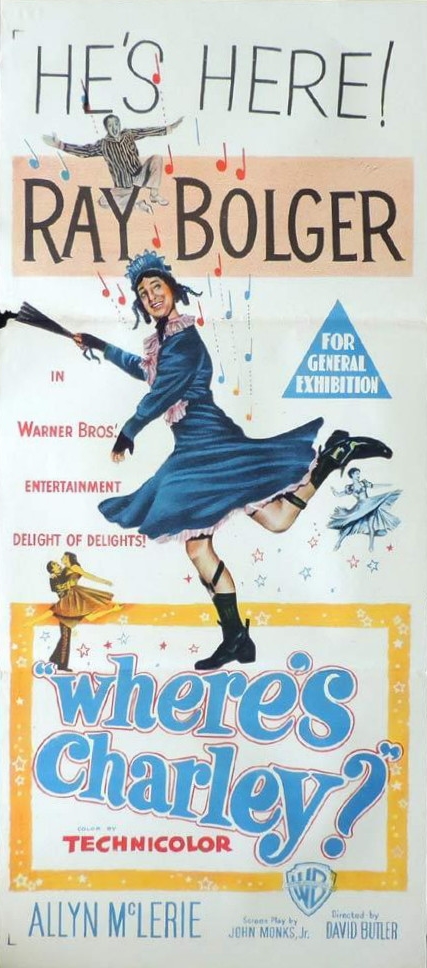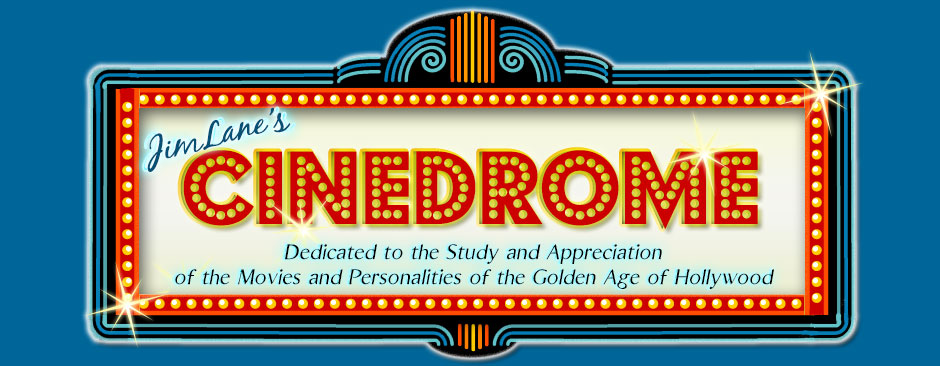Cinevent 2017 — No. 49 and Counting, Part 2
Day 2 – Friday
 A surprise hit on Friday was Two Living, One Dead (1961), a British picture so utterly obscure that it was barely released even in the UK. It didn’t show up in the States until 1963, and it wasn’t reviewed by the New York Times or Variety — and in those days, as now, Variety reviewed everything. And yet it has a solid pedigree: It was co-written and directed by Anthony Asquith, the son of Britain’s World War I prime minister whose other movies included Pygmalion (1938), The Browning Version (’51), The Importance of Being Earnest (’52), The V.I.P.s (’63) and The Yellow Rolls-Royce (’64). It starred Virginia McKenna and Bill Travers (already popular stars and later best known for playing Joy and George Adamson in Born Free [’65]) and Patrick McGoohan, later of TV’s Danger Man (Secret Agent in the US) and The Prisoner.
A surprise hit on Friday was Two Living, One Dead (1961), a British picture so utterly obscure that it was barely released even in the UK. It didn’t show up in the States until 1963, and it wasn’t reviewed by the New York Times or Variety — and in those days, as now, Variety reviewed everything. And yet it has a solid pedigree: It was co-written and directed by Anthony Asquith, the son of Britain’s World War I prime minister whose other movies included Pygmalion (1938), The Browning Version (’51), The Importance of Being Earnest (’52), The V.I.P.s (’63) and The Yellow Rolls-Royce (’64). It starred Virginia McKenna and Bill Travers (already popular stars and later best known for playing Joy and George Adamson in Born Free [’65]) and Patrick McGoohan, later of TV’s Danger Man (Secret Agent in the US) and The Prisoner.
The movie was actually a remake of two even more obscure pictures, A Dead Man Among the Living (Czechoslovakia, 1947) and 1937’s To levende og en død from Norway, home of Sigurd Christiansen, author of the 1931 novel on which all three pictures were based. The premise is simple: Two masked robbers hold up a local post office; the manager resists and is shot dead, another man winds up knocked unconscious, and the third (McGoohan) cooperates, turning over the office’s funds to the robbers and coming out of the incident unscathed. He behaves, in fact, exactly as authorities nowadays tell us anyone in that situation should do. In that time and place, however (meaning Norway in 1931, if not 1961 Britain), the man is condemned, even by the police, as a coward. His son is bullied at school, he loses his job, his marriage hits the rocks — even as his co-worker’s widow wishes her dead-hero husband had been similarly “cowardly”. This social pariah eventually strikes up a friendship with a man who turns out to have been one of the robbers — and who proves to him that he displayed the better part of valor. But is it too late for him to put his life back together?
Two Living, One Dead is a razor-sharp British noir, suspenseful, thoughtful and thought-provoking, with excellent performances. If you weren’t in Columbus for this screening, good luck ever finding it…anywhere.
 There were other pleasures on the bill on Friday: Exclusive (1937), a crusading-newspaper melodrama from director Alexander Hall starring Fred MacMurray, Charlie Ruggles, Lloyd Nolan and Frances Farmer (at the height of her sadly truncated career); The Scarlet Car (1917), one of only a handful of Lon Chaney’s early pictures that has survived to the present day; another Laurel and Hardy short, Towed in a Hole (1932), in which the boys are fishmongers who decide to invest in their own fishing boat, with the usual mayhem ensuing.
There were other pleasures on the bill on Friday: Exclusive (1937), a crusading-newspaper melodrama from director Alexander Hall starring Fred MacMurray, Charlie Ruggles, Lloyd Nolan and Frances Farmer (at the height of her sadly truncated career); The Scarlet Car (1917), one of only a handful of Lon Chaney’s early pictures that has survived to the present day; another Laurel and Hardy short, Towed in a Hole (1932), in which the boys are fishmongers who decide to invest in their own fishing boat, with the usual mayhem ensuing.
But the biggest event of the day — indeed, the most eagerly awaited screening of the whole weekend — was Where’s Charley? (1952). This is arguably the greatest movie musical you can’t see, and the fact that you can’t see it is nothing less than a crime against popular culture. But more on that in a moment.
Where’s Charley? was a Broadway musical adaptation of Brandon Thomas’s Charley’s Aunt, the granddaddy (grandmama?) of all cross-dressing comedies. The show streamlined Thomas somewhat, combining Charley Wykeham and Fancourt Babberly (who is dragooned into masquerading as Charley’s aunt from Brazil, “where the nuts come from”) into one character. Playing Charley, in drag and out, was Ray Bolger, just about the greatest comic dancer America has ever produced (his performance as the Scarecrow in The Wizard of Oz, even his extended dance to “If I Only Had a Brain”, hardly begins to do justice to his talent). The show was a personal triumph for Bolger and ran 792 performances on Broadway at a time when anything over 300 qualified as a smash hit.
In 1952 Jack Warner — at the beginning of his penchant for faithfully filming Broadway musicals (The Pajama Game, Damn Yankees, Gypsy, The Music Man, My Fair Lady, 1776) — transferred Where’s Charley? to the screen pretty much intact, directed by David Butler and choreographed by Michael Kidd in his movie debut. The movie was another hit, fondly remembered by all who saw it, and Ray Bolger’s own favorite of all his film appearances. Then it disappeared from public view.
The problem was Frank Loesser, whose score for Where’s Charley? was his first Broadway score and his first solo effort. He didn’t like it, certainly not in comparison to his later works: Guys and Dolls (1950), the movie Hans Christian Andersen (1952), The Most Happy Fella (1956), How to Succeed in Business Without Really Trying (1961). Loesser died in 1969, before Warner Bros.’ 20-year lease on the Where’s Charley? score expired, but he made it clear that he didn’t want the lease renewed, and his widow Jo Sullivan Loesser (who according to some reports never liked the movie much anyway) has respected his wishes to this day. (Although, as Richard Roberts observes in his program notes for this screening, neither Frank nor Jo Loesser were too embarrassed or too proud to pocket the small fortune in royalties for “Once in Love with Amy”, the show’s breakout hit.)
We can only hope that Jo Loesser and her late husband’s other heirs will relent before the original film elements to Where’s Charley? have crumbled to dust (if it’s not already too late for that). Until that day, we must content ourselves with the occasional print like the one that screened at Cinevent this year. It was not, alas, a Technicolor print, but a 16mm rental print struck off in the 1950s in the notoriously unstable Eastman process; there was still color present thanks to decades of cold storage, but it had already shifted to orange, on its inexorable march to beet-red, then lemonade-pink, before in time fading away to nothing. (I’ve been informed that, unlike these American Eastman prints, rental prints in England were struck in real Technicolor, which never fades. I imagine if one of those prints ever finds its way into the market, the owners can pretty much set their own price.) Orange color or no, this was a rare opportunity to see Where’s Charley? filmed right on the grounds of Oxford University where Brandon Thomas’s play takes place, with Michael Kidd at the beginning of his career and Ray Bolger at the height of his, recreating one of Broadway’s legendary performances. And yes, the audience all sang along with “Once in Love with Amy”.
Where’s Charley? was the highlight of the day, but the rest of the program wasn’t exactly an anticlimax. There was Professional Sweetheart (1933), Ginger Rogers’s first starring vehicle (and in that Pre-Code year, parading her in a more revealing array of lingerie than moviegoers would ever see again); and the day wound up with Man Made Monster (1941, reissued in 1953 as The Atomic Monster), a Universal variation on Frankenstein with a sympathetic performance by Lon Chaney Jr. midway between his breakout role as Lennie in Of Mice and Men (1939) and his iconic turn as The Wolf Man (’41).
On Saturday it would be cartoons, a feature from producer George Pal, and a restoration of a semi-lost Laurel and Hardy classic. But I’ll get to that next time.
